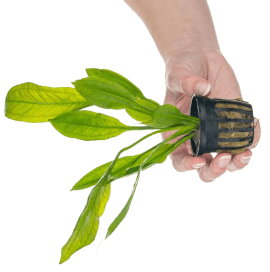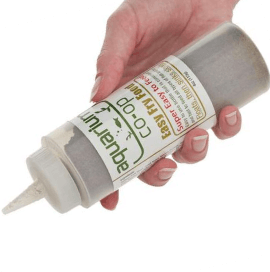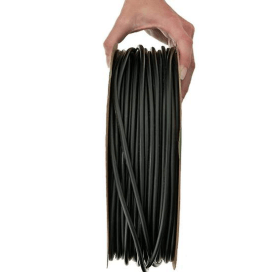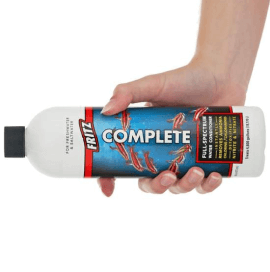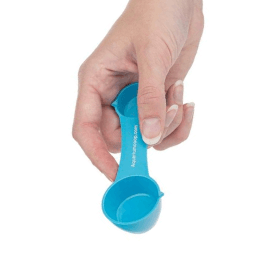Freshwater Fish Tank Cycling - How to Prepare for New Fish
Have you ever seen a fish in the wild living in pure, crystal clear water with no other contaminants? Probably not. That’s because life isn’t sterile; it doesn’t flourish in “pristine” conditions, but rather when there’s a whole ecosystem of microorganisms, plants, and animals that are in balance with one another. So, if you’re looking to set up a brand-new fish tank, let’s talk about aquarium cycling and how to prepare a healthy, thriving environment for your fish to live in.
What is the Aquarium Nitrogen Cycle?
Nature’s way of recycling nutrients is known as the nitrogen cycle. At a very high level, bacteria and plants convert and consume nitrogen compounds from their environment, animals eat the plants and bacteria, and then the plants and bacteria consume the animal’s waste as their food.
In an aquarium, the same thing happens. You feed your fish, your fish produces waste (also known as ammonia), and then bacteria and plants absorb the toxic waste so that the water is safer for your fish to live in. But wait! What happens if you’ve just set up a new aquarium with tap water, gravel, and decorations? Where are the plants and beneficial bacteria that can break down the fish waste? That’s why we need aquarium cycling: the process of making sure that your fish tank’s ecosystem can process ammonia without killing any animals.
For more details about how the aquarium nitrogen cycle works, check out our full explanation here.
How to Cycle Your Aquarium
There are several ways to cycle an aquarium, and some are easier than others. Based on our experiences of successfully running hundreds of fish tanks, here are the methods that have worked well for us:
Fish-In Cycling
This approach is the most common, used by both beginner and veteran fish keepers alike. Most people cannot watch an empty aquarium for several weeks or months, hoping that beneficial bacteria are actually growing. So, here are a few tips to help you get started on the right foot:
- When setting up your aquarium, only add a few fish at the start. (Some people recommend 1 small fish for every 10 gallons of tank water.) Look at your fish stocking list, and choose the hardiest, most durable species you plan on keeping.
- Feed your fish very lightly at first and then gradually increase the amount over the next four to six weeks. The beneficial bacteria feeds on fish waste, but since there isn’t a lot of bacteria in the beginning, you don’t want to overfeed the animals until enough bacteria has grown to handle their waste load.
- You can significantly speed up the aquarium cycling process by adding beneficial bacteria from the onset. If you already own several aquariums (or have a friend that does), simply transfer some used filter media or substrate from an established fish tank to your new one. You can also buy live nitrifying bacteria to help speed up the cycle.
- Measure the water quality using ammonia test strips and multi-test strips; this should be done every day or two at first. Whenever you see a detectable amount of ammonia or nitrite (anything above 0.2 ppm), do a partial water change to remove the toxic compounds and provide new, clean water for your fish.
- The cycle is considered “complete” once you are able to feed your fish normal amounts of food for a week, and ammonia and nitrite levels stay at 0 ppm while nitrate levels are above 0 ppm. (At this point, you can begin slowly adding more fish, with some wait time in between – just to ensure the beneficial bacterial growth keeps up with the increased waste load.) Nitrate is a safer compound for fish, but once it rises to concentrations more than 40 ppm, you know it’s time to do a water change to lower the nitrate levels.

Aquarium test strips help you determine if there are toxic levels of nitrogen compounds in the aquarium.
Cycling with Plants
This method is our favorite because it truly transforms your aquarium into a natural ecosystem, both biologically and visually. Rather than setting up a bare tank with very little to no fish, you can immediately add live aquarium plants and then focus on growing them with good lighting, substrate, and fertilizers. In fact, according to microbiologist Diana Walstad, aquatic plants consume nitrogen waste even more effectively than bacteria. All the more reason to go for a planted tank! (That said, the leaves and roots of the plants will contribute some beneficial bacteria, but you can add even more using the tips mentioned above.)
Once the plants (or algae) show new growth, the cycle is complete. Your plants are successfully consuming ammonia and nitrates and converting them into new leaves and roots. Gradually add a few fish, feed them sparingly, and use water test strips to ensure that ammonia and nitrites are at 0 ppm and nitrates are below 40 ppm.
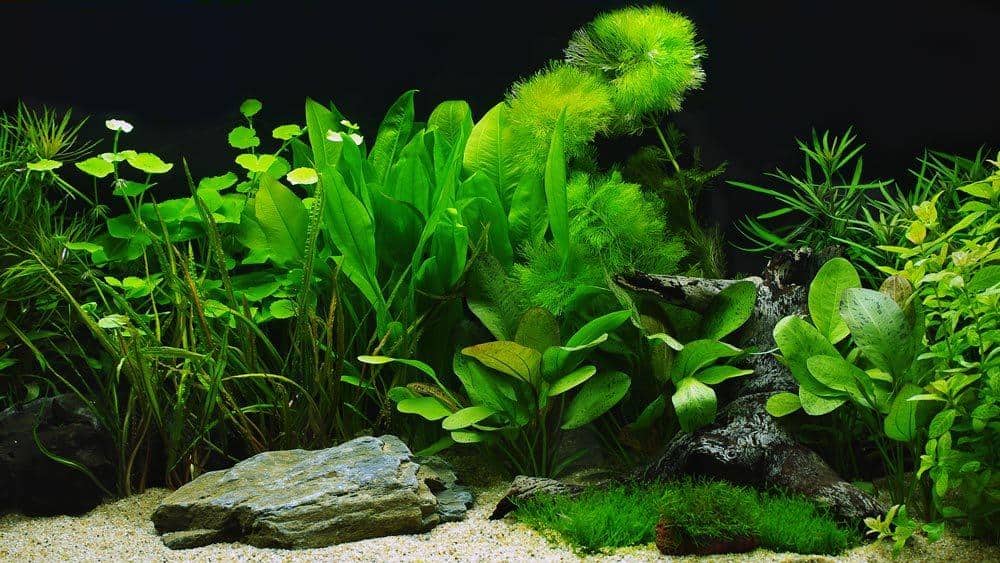
A planted tank is not only beautiful to behold but also improves water quality for your fish.
Fish-Less Cycling
This technique for cycling has gained a lot of interest on the Internet, and it involves placing fish food or other source of ammonia in an empty aquarium to grow bacteria. After helping countless people in the hobby, we don’t recommend this process for beginners, since we find that many new fish keepers typically do it wrong and struggle to complete the process.
However, if you’re set on using this method and know what you’re doing, make sure to seed the tank with beneficial bacteria via used filter media or a bacteria additive because otherwise you’re going to have a long road ahead.
Final Thoughts on Cycling
Aquarium cycling requires a bit of effort (and patience) on your part, but trust us – the results are totally worth it. By preparing a welcoming ecosystem for your new fish, you greatly minimize loss of life and make your aquarium maintenance routine easier.
